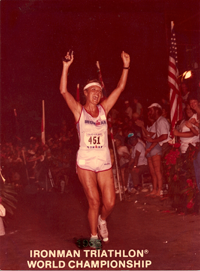Remembering Pearl Harbor: Ruth Nunes Heidrich
— Submitted by UH alumna Ruth Nunes Heidrich, PhD (UH Mānoa, MEd, 1969)
 As announcements of events commemorating the 75th anniversary of the attack on Pearl Harbor, my memories of that day always turn to the rarely-mentioned events occurring simultaneously on the Windward side. Well, almost simultaneously. Actually, bombs fell on the Kaneohe base at 7:55 a.m., five minutes before the attack started on Pearl Harbor. These are my memories of that awful day.
As announcements of events commemorating the 75th anniversary of the attack on Pearl Harbor, my memories of that day always turn to the rarely-mentioned events occurring simultaneously on the Windward side. Well, almost simultaneously. Actually, bombs fell on the Kaneohe base at 7:55 a.m., five minutes before the attack started on Pearl Harbor. These are my memories of that awful day.
Waking up early before anyone else had gotten up, I slipped on my bathing suit and headed across Mokulua Drive, the street I had to cross to get to my favorite playground, the beach at Lanikai. It was a clear and sunny morning just before 8 a.m. I was playing in the sand with the waves lapping at my feet when all of a sudden I heard the screaming sounds of planes dive-bombing, strafing, and swooping low. They were over in the direction of the navy base where my father, Leslie Nunes, was just completing his usual midnight shift. There was the sound of explosions, more planes, and now some of these planes were swooping low over on the other side to also attack Bellows Field. I was right in the middle of these attacking planes and felt like I was about to be hit, too, as they were so low and so close.
Next thing I knew, neighbors were pouring out of their houses screaming “We’re being attacked!” and “We’re being bombed!” It seemed wherever we looked, planes filled the sky with their dive-bombing. Their bombs made loud explosions and lots of black smoke rose in the skies both to our right and to our left. I watched as my neighbors ran first in one direction and then another, not knowing which way to go. Even as a six-year-old, I knew something really bad was happening and I didn’t know which way to run, either. All of a sudden, sirens started going off. I heard my mother calling and then she grabbed me, running back to our house where we waited to see what was going to happen next.
Back at the base, which I knew then as Mokapu Naval Air Base, my father had just finished opening and assembling boxes of brand new radar equipment. He and his right-hand man, 18-year-old Abe Lee, were in the process of checking it out when they saw radar returns showing a fleet of planes coming towards them through the Kolekole Pass. My dad called Pearl Harbor to ask what was going on. They said that it was just a fleet of expected aircraft coming from the mainland.
My dad started to say that if they were coming from the mainland, they would not be flying through Kolekole Pass. Before he finished they saw bombs dropping on the airfield just feet across from the shop. He shouted into the phone, “We are being attacked!” The response was laughter; they told him to “Go home and sleep it off!” At this point, the base mobilized. Pilots appeared on the flight line and taxied planes out from the hangars, but as each got out to the taxi way, they were strafed and set afire. My father and Abe ran out and each jumped on a Caterpillar bulldozer and started pushing the badly damaged planes aside to make room for another plane. At one point, my father looked up and saw a plane clearly marked with the red rising sun on the wings heading straight towards them. He yelled out to Abe, “Look out! Look out!” as he jumped off and behind his Caterpillar but it was too late for Abe! Abe never made it.
Recounting this to reporter, Barbara Marshall, who was working on the documentary “Winds of War” back in the 1990s, my father gave details which I’d not heard before. These brought him to tears. I saw my father cry—for the first and only time in my life.
My dad couldn’t come home for the next 48 hours, both because they were trying to get prepared for a possible follow-on attack and because the narrow roads to and from the base had cars which had been strafed, blocking anyone from either leaving the base or coming on!
The next thing I remember is my dad digging a big hole in our back yard and taking down the garage door to use as the roof of our homemade bomb shelter. All schools were closed. I was in the second grade at Kailua Elementary School and think I missed all of the rest of that school year. (I should have been in the first grade but my grandmother, who was a teacher there, got me started when I was only 5 years old, saying, “This child is ready for school NOW!”) When schools finally re-opened, our playground had been turned into a long series of trenches with long low benches. This was where we scrambled to during our frequent air raid drills set off by sirens. Everyone was sure that since we’d been hit so hard and were so vulnerable, a follow-on attack was almost inevitable. For years after, the sound of any siren going off initiated moments of panic.
The next time I went over to my favorite playground, I found it was totally inaccessible as there was barbed wire about 8 feet high strung from one end of the beach to the other! Some time later, when I thought it was safe, I climbed through the barbed wire to go swim and got a pretty bad scrape. I still bear that scar on my left leg. I remember the sounds of tanks and amphibians rumbling down our street at all hours of the day and night. Us kids would run out to see them and flash our “V for Victory” hand signs, and, of course, were delighted when they flashed back!
All windows were painted black including headlights on cars, except for a tiny slit at the bottom. We were told not to turn on any lights at night, and there were OCD block wardens who went up and down the street checking for any light at all. We were issued gas masks and had lots of drills to practice putting them on as quickly as possible. We had to take them with us wherever we went. Martial law was declared and food and gas were rationed.
As kids, we did our part in the effort to help win the war. I collected tin foil from the many cigarette wrappers strewn all over and used it to make big balls of foil. Smoking was so common then, especially among the military who seemed to be all over the place. We also bought war bonds — or in my case, war stamps as my little contribution to help support our troops.
And so it went for the next four years. Since this was way before the Pali Tunnel was built, trips from Lanikai to town were rare and scary. At what is today the Pali Lookout, the wind blew so hard that if you didn’t roll up all your windows, it felt like you’d be blown off the cliff. I had nightmares from the tight hairpin turns where I was sure that our old Packard was going to roll backwards and down off the steep cliffs. With little gas available for discretionary driving, my world was very small until 1945. My mother had been so traumatized by this that she left my father, took us kids and got us on the Lurline, the first ship allowed to take civilians along with ambulatory war wounded to San Francisco, California. I remember seeing the ship’s empty swimming pool with each of its four walls stacked high with canvas cots for wounded soldiers and sailors.
I didn’t get back to Hawai‘i until 1952 and have been here off and on ever since, but there are reminders all over the island of those scary times. I worked at PACAF Headquarters on Hickam AFB for many years and was frequently reminded of the attack by seeing the scars on that building which are there to this day! In fact, I retired from there as a GS-13 Logistics Management Specialist. I selected that career field to help make sure this never happened again! I can tell you that, even today, I have a lot of gratitude for having survived one very scary, life-altering experience!
*Submission has been slightly edited for clarity purposes.
